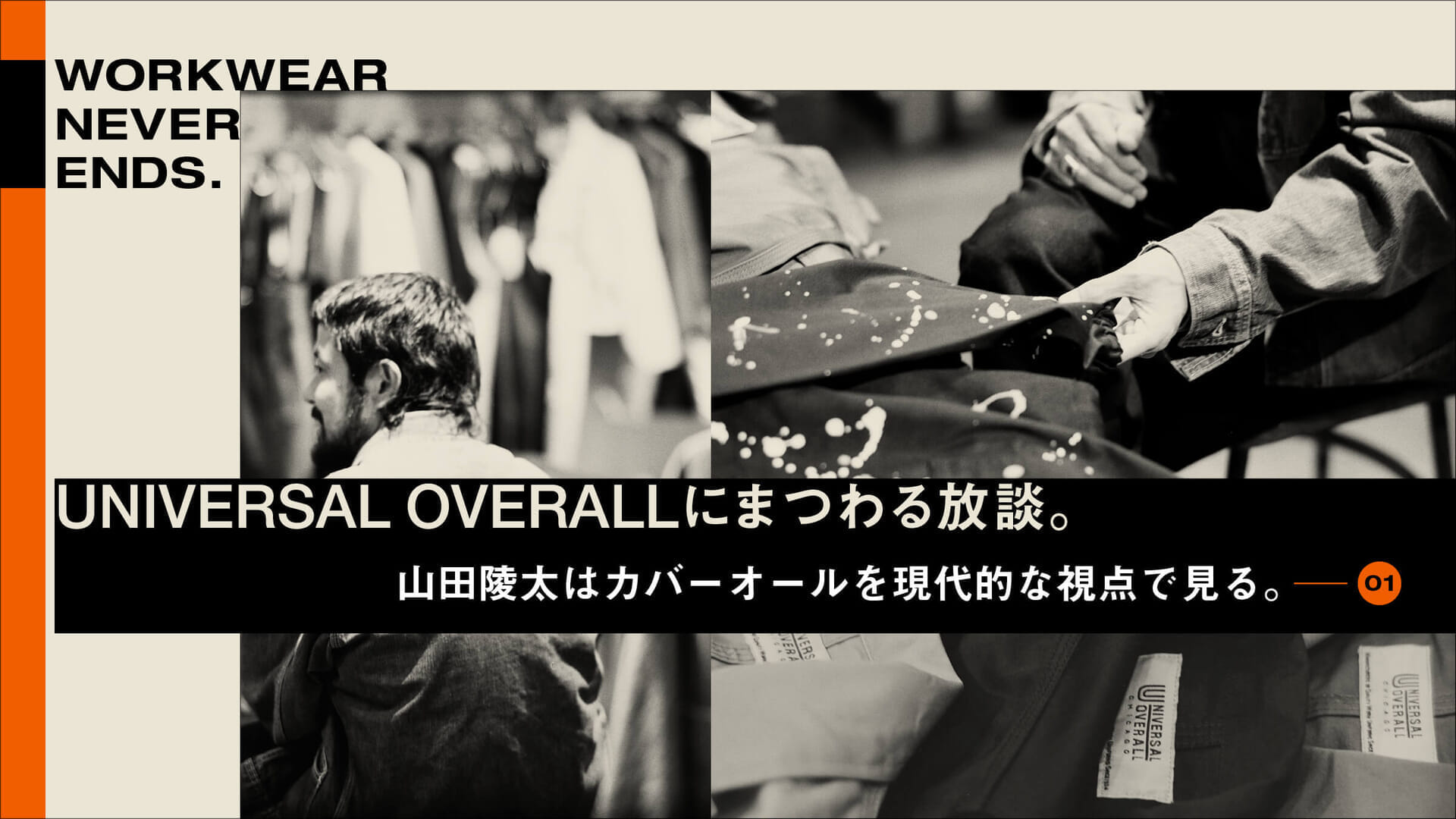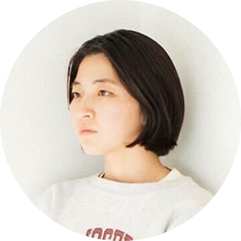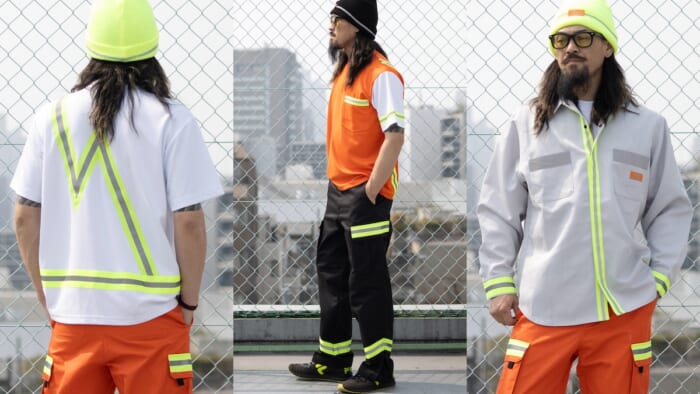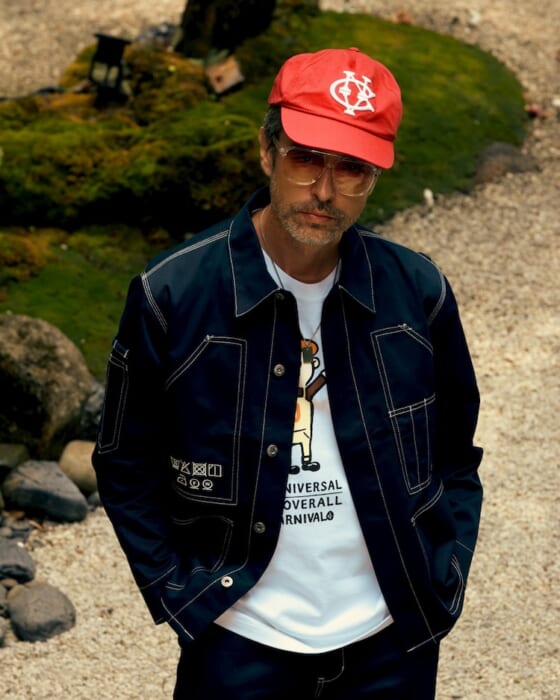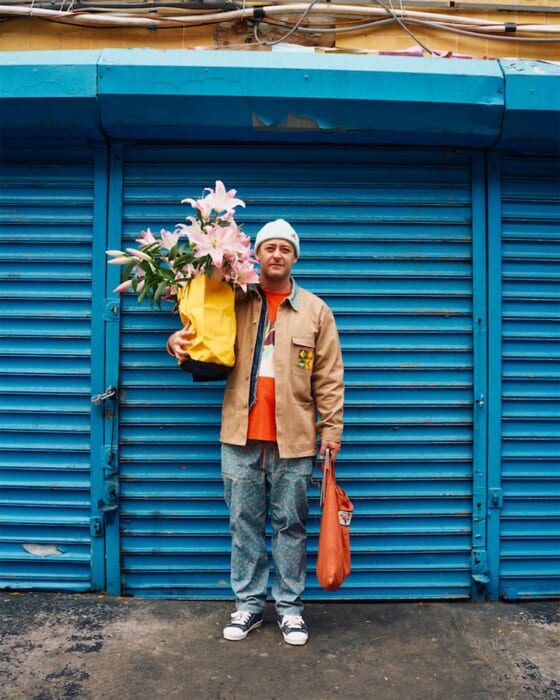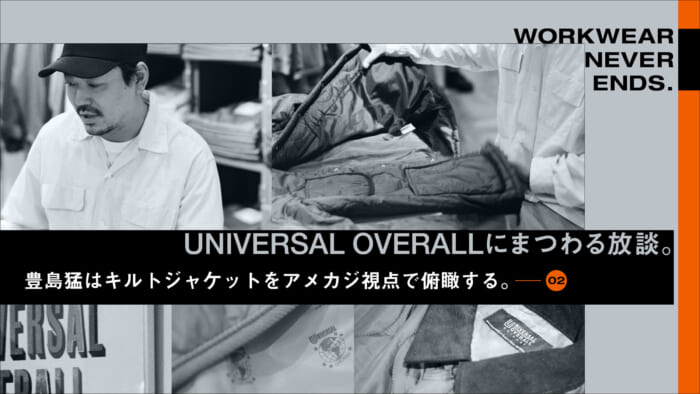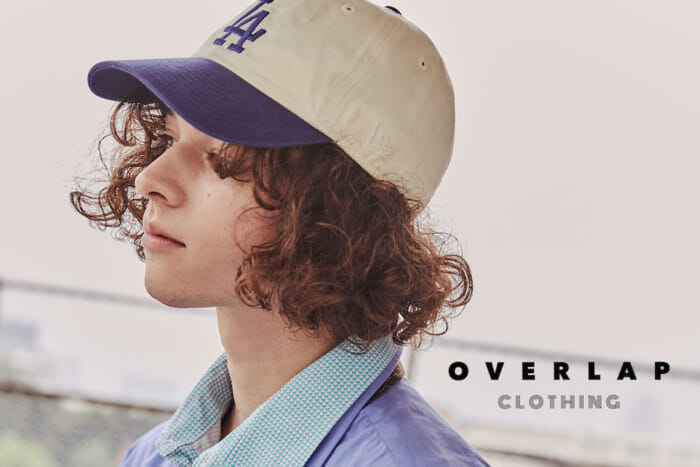A modern brand that has successfully sublimated workwear into fashion.

When did you first learn of the existence of "Universal Overalls"?
Yamada: I don't remember when, but I seem to remember seeing it in Santa Monica (a thrift store) along with a pair of painters from "POINTER". Moreover, I have an image that I saw them not as used clothes but as new clothes. I have never seen this brand in second-hand clothing, and I heard that it was founded in 1924, but I understand that it was a relatively latecomer to the market.
Do you feel that the brand is a relatively new work brand?
Yamada: That's right. I don't know what kind of presence they have in the U.S., but I think they might be "active workwear." In the 90's workwear trend, Dickies also had shirts in their vintage clothing line, but no items such as coveralls. I don't know, but I think it might be a kind of "current workwear.


Yamada: Although these coveralls have simplified sewing as the stitching on the gills is a single needle, the buttons are donut buttons, which have been in vogue since the 1930s. It is interesting to look at it that way because it is a mixture of details from various eras.
Do you see any significant trends in current workwear, especially in vintage clothing?
Yamada:
In the vintage clothing world, the so-called "gory vintage wear" of the 50's and 60's is popular ......, but we feel that poly-blend items from the 90's, which we call "regular" items, are in good shape. I think that the items of the 90's poly-blend style, which we call "regular", are in good shape. In fact, I think that the younger generation recognizes such items from the 90's as fine vintage clothing, because they are positioned as 70's items from when they were in their 20's.
For example, if we were to feature workwear in a media feature, a style that pushes a chemical atmosphere, such as mixing fluorescent items, rather than an early American feel, would be popular.
The coveralls from [Universal Overalls] also have orange tabs on the front pockets, so I think this kind of detail can be incorporated in a modern way.

A: We asked you to look around the store, but were there any items other than the coveralls that caught your attention?
Yamada:
I thought it was stylish, with items like double-fronted cock shirts and woolen items. Basically, for Americans, workwear is positioned as real work clothes, like "Toraichi" in Japan. In the northern part of the U.S., construction workers wear duck coveralls, and in the south, where it is warmer, you can see people wearing poly-blend work pants.
Since there is no concept of turning workwear into fashion, I think that this kind of material change and updating of the original form is a very Japanese approach.


